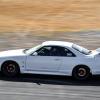Announcements
-
Similar Content
-
Latest Posts
-
By Full-Race Geoff · Posted
G30-770 with their 1.06 a/r twinscroll housing is an awesome combination. Will be over the moon with that on a properly configured RB25 -
Yes correct. Link is at: https://hypergearturbos.com/product/atr43ssiwg/ SS2 Profile, T3 .71 Turbine housing, Ball bearing upgrade, and oil line kit. Thats pretty much it.
-
Can you link me to the correct one on your site? .71 P98 definitely hit 300kws without being to laggy?
-
Parts are brand new, decided to go in another direction so these parts are now un-needed. Includes: x2 R35 AFM units x2 NZefi adapters to connect to the factory harness x2 AFM housings with 80mm piping diameter x2 k&n universal pod filters with 4” flange $500 Free delivery Aus wide
-
Assume the application is for internal gate. Far as internal gate concern SS-2 makes around 300rwkws on P98 fuel in either .63 or .71 turbine housing. Response are about the same between the two.
-





Recommended Posts
Create an account or sign in to comment
You need to be a member in order to leave a comment
Create an account
Sign up for a new account in our community. It's easy!
Register a new accountSign in
Already have an account? Sign in here.
Sign In Now